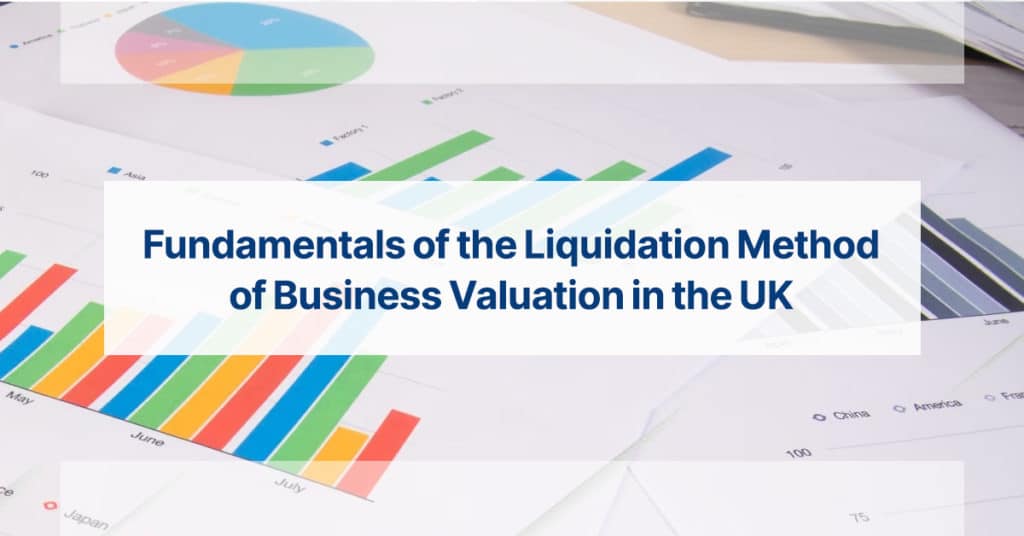When a company is put into liquidation, this is a method of evaluating the worth of a business. It measures what the company is worth as a whole when all of its physical assets and intangible assets are taken into account. It is only used when an organisation finds itself in difficult financial times or is solvent but wants to extract the remaining profit and wind down.
Everything That You Need to Know About the Liquidation Approach
The fundamentals of liquidation involves working out the value of a company based on what it would be worth if all of its assets were liquidated entirely (i.e. assets turned into cash). It’s typically used when an organisation has to sell off all of its assets to pay off different shareholders and creditors while settling other liabilities.
A few factors could affect the value of liquidation, one of which is how long the process will take. For some businesses, it could be the case that they earn some extra income whilst the company is being wound up, whereas, on the other hand, some organisations wouldn’t make anything throughout the process.
There are several ways a business can be valued throughout the liquidation process.
What Is Business Valuation?
A business valuation is where the economic value of an organisation is determined. During this process, all different business areas will be analysed to determine their worth and the worth of their units and departments. A valuation will not only take place when it comes to the liquidation of a company, but it could also be necessary to sell the business, establish a partnership or calculate taxation.
Business Valuation Basics
Business valuation is usually a topic of conversation in corporate finance when a business is looking to sell or is in liquidation. The valuation is the process involved in working out what the current worth of that business is, using different measures and looking at the business’s existing assets. Many people would reach out to liquidators such as Simple Liquidation when they need to have the total value of their business laid out.
A valuation can include a whole range of different aspects, for instance, the company’s management, the business’s capital structure, potential future earnings and its current liabilities. There are a few different ways to value a business, but some of the more common approaches include a thorough review of the financial statements of the business, the removal of cash flow models and the subtraction of outstanding liabilities to creditors.
Different Methods of Business Valuation
Some of the different methods used include:
- Market Capitalisation
This method can only be used on companies that have gone public. It is one of the simplest versions of working out the value of a company, as it involves multiplying a company’s share price by the number of currently outstanding shares. For instance, if you consider the current share price of Microsoft is $86.35, and they have 7.715 billion shares outstanding, the total value of Microsoft is $666.19 billion.
- Book Value
The Book Value method is frequently used when you need a quick figure, and your business is not public. It’s an easy way to work out value as it takes the shareholders’ equity of a business shown on the balance sheet and then removes the total liabilities from the company’s assets.
- Liquidation Value
This is a fundamentals of liquidation method which is often used in the liquidation process. It will reveal the net cash a business would receive if it liquidated all its assets and paid off the liabilities. It is helpful when it comes to working out how much liability a business might still need to pay if all of its assets were paid off and allows liquidators to work out where the current cash should go first to satisfy both creditors and the business to the fullest extent.
Does Your Organisation Need Help with Liquidation?
If you think your business needs to go into liquidation, you should enlist the help of professionals. At Simple Liquidation, we have a team of experts on hand who can look at your organisation’s current stance and then provide advice on the best way that you can move forward.
Some of the most common warning signs that indicate liquidation could be on the horizon include lack of cash, pressure from suppliers and creditors, problems paying your staff, high levels of debt and a lack of reliable management information.
There are a few different tests that you can implement to work out whether you should consider liquidating your company. Some of these include the following:
- The Cash Flow Test
This is when you look at the bills that your business is due to pay and work out whether you will be able to afford them. If you cannot pay your bills as and when they fall due, it might be worth reaching out to liquidators.
- Balance Sheet Test
As a company, you likely have several outstanding liabilities, which stem from money borrowed, outstanding claims and contingent liabilities. If these amount to more than your assets are worth, liquidation could be an option.
- Legal Action Test
Finally, liquidation could be a real possibility if creditors have taken action against you. Some of the most common actions come in the form of a Statutory Demand or a winding-up petition.
Get In Touch
If you are considering liquidation as an option and would like more information on working out the value of your business and whether or not it is a viable option, then do not hesitate to get in touch, and we would be happy to help.




